make creamy & delicious soy milk from scratch
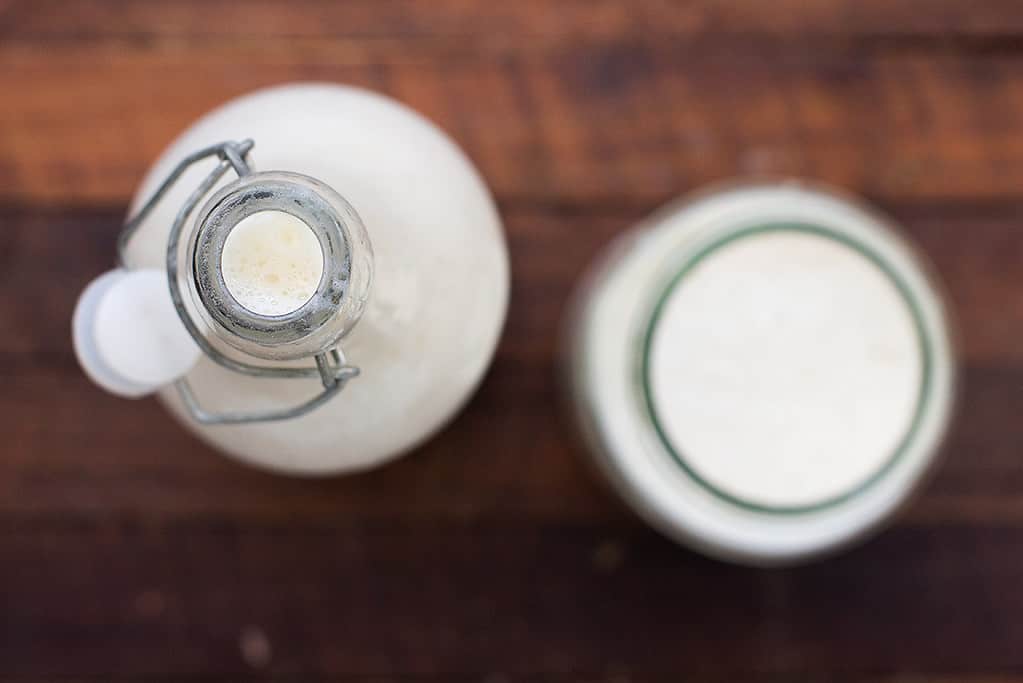
One of my foodie goals this year was to learn and create a recipe for how to make creamy soy milk from scratch. I’m already making my own almond milk more often than not now (the recipe for this can be found in my cookbook e.a.t), so it was only naturally to kick it up a gear and start playing with other dairy free milk options.
There are plenty of bought soy milks on the market, in fact you can read about some of them in this review I did a while back called The Best 14 Dairy Free Milks To Put In Your Trolley; Panel Tested For Taste. I’m certainly not saying that you must follow lead and make soy milk from scratch when there are some perfectly good brands around. However, if you love that extra creamy freshness that only comes with homemade nut milks then this recipe is for you…well I should say legume milk really shouldn’t I to be politically correct.
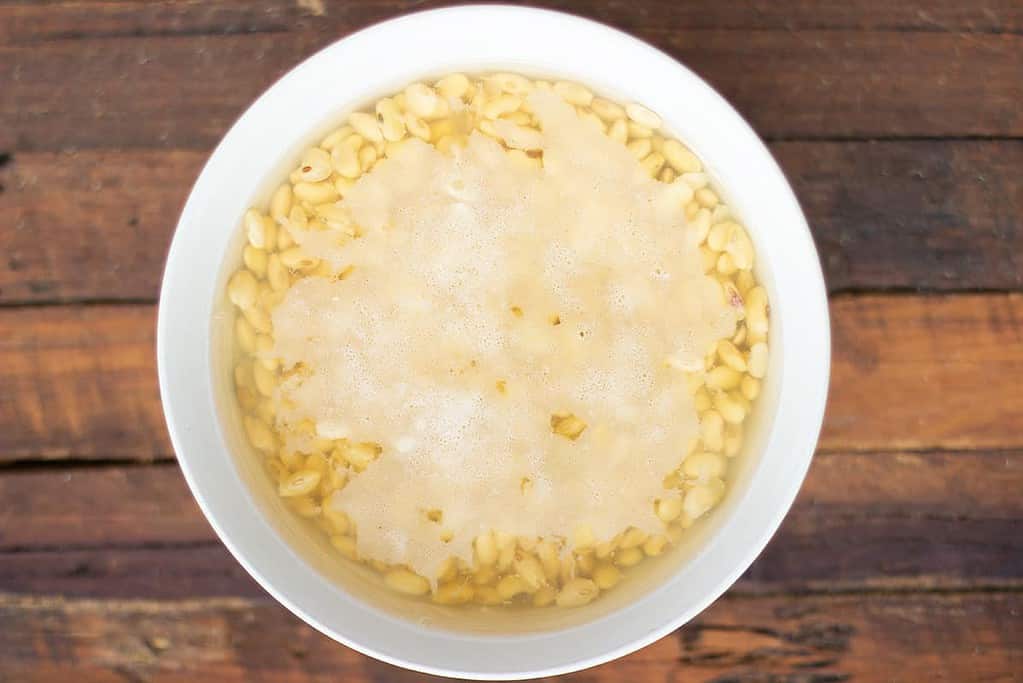
Soy milk (and products made from soy) are one of those ingredients that so many people avoid due to fear surrounding soy beans. I’ve written about this before here in this blog post. The funny thing is that when I ask clients in The JCN Clinic about consuming soy products or eating even tofu as a protein source, they often reply “no I don’t eat tofu, it’s bad for you… isn’t it?” The thing is, so many people are avoiding soy yet they are not even sure why.
I’d like to start off by reiterating here that dietary soy is a modulator of the oestrogen within our bodies, and a weak one at that. If we were to be concerned about something affecting our oestrogen levels exogenously it should be our use of plastics, especially heating food in plastics. These types of xenoestrogens can have quite a profound negative effect on our hormones.
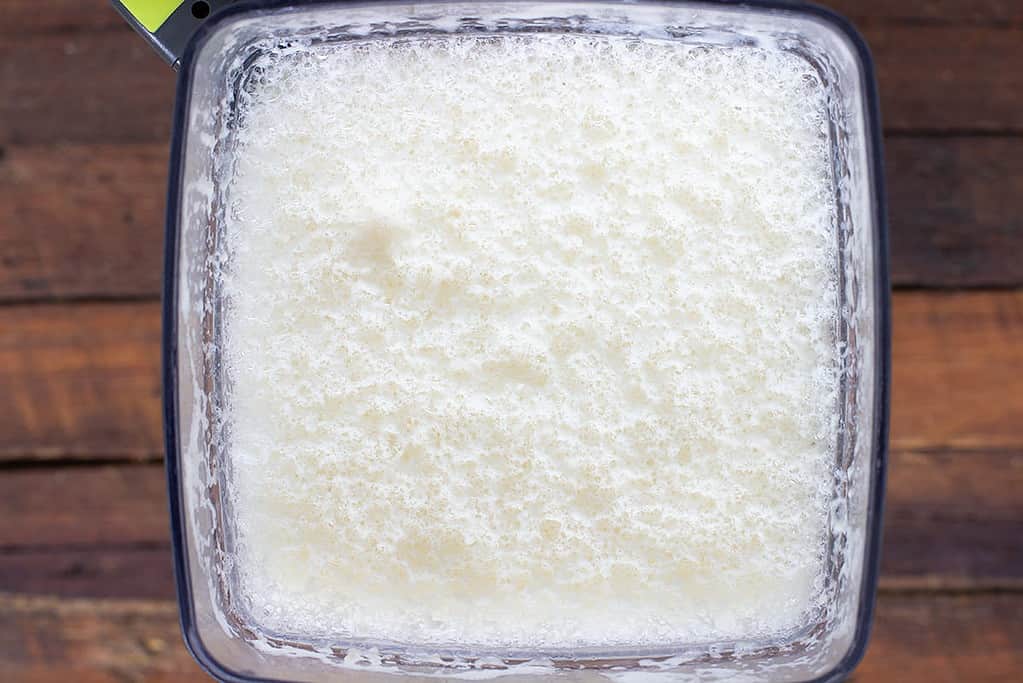
Soy conversely encourages oestrogen to be metabolised down more beneficial metabolic pathways and in fact discourages oestrogen from being converted to metabolites associated with oestrogen driven health conditions. It’s ironic to me that people are avoiding food like tofu and tempeh because of fears related to oestrogen excess when in fact these wholefood soy based foods can help by down regulating dysfunctional oestrogen.
To nerd out a bit more and get into the science (glaze over this part to the recipe if this part hurts your brain) – biochemically, isoflavones found in soy can bind to two different forms of oestrogen receptors in the body. They have more affinity however to bind to one receptor over the other. These two different terminals if you will, have different roles in regulating gene expression and physiological functions. The receptor associated with human breast cell cancer proliferation is the receptor of less affinity, where as the receptor with high affinity is actually associated with reducing proliferation. A 2010 study from the Journal of Nutrition on Is Soy Consumption Good or Bad for the Breast? concluded “In summary, human studies that have investigated changes in circulating hormone levels or mammographic density in pre- or postmenopausal women by diets high in isoflavones from dietary supplements or soy foods have found no significant effects, suggesting that they do not alter breast cancer risk. However, these studies have used moderate doses of isoflavones, reflective of Asian soy food consumption, and it is possible that higher doses could yield different results”.
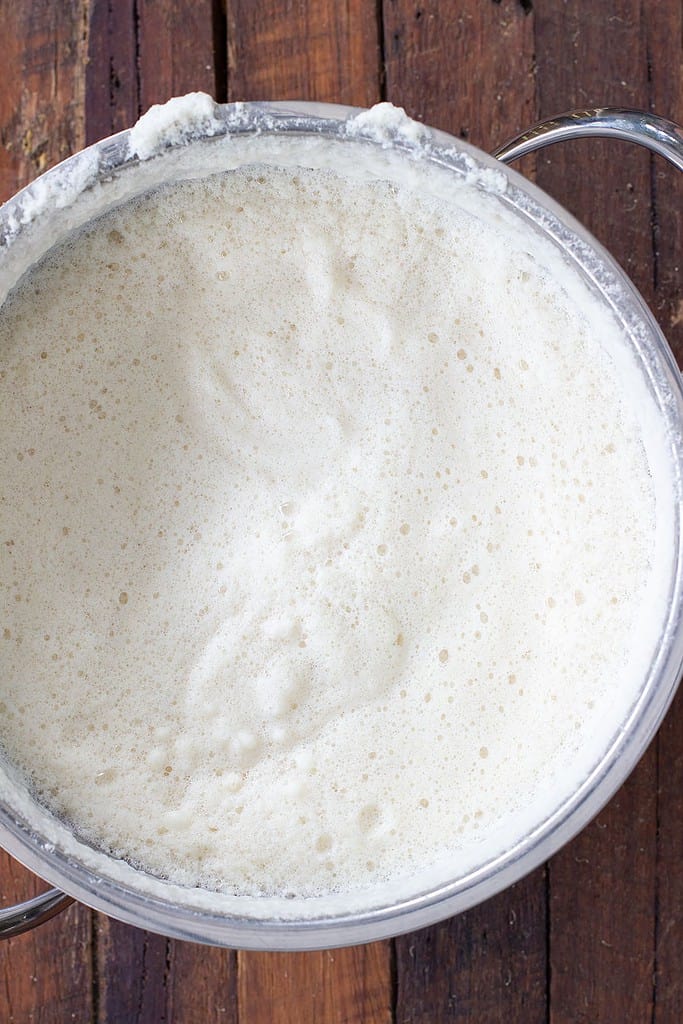
Generally at The JCN Clinic if our nutritionists see soy being problematic it’s more commonly related to a food intolerance and/or in relation to poor gut function (both of these issues have nothing to do with soy affecting oestrogen levels). Soy provides an abundance of fermentable carbohydrates that can be problematic in a poorly functioning gut, especially in the presence of SIBO and dysbiosis (imbalanced gut flora in the lower bowel). Of course when we correct our gut imbalances, remove inflammation and build a strong, robust gut lining we can often tolerate, and more so thrive with these types of foods in our diet.
I do hope this blog post helps you lay some of those unfounded fears around whole food soy products to rest.
Remember at JCN we encourage whole food consumption. This means non-GMO soy beans, tofu, tempeh, miso and edamame beans. I’m certainly not talking about modified soy and GMO ‘jacked’ products sold for mass market consumption. That’s like comparing apples with oranges.
Lastly, when using this recipe for how to make creamy soy milk please be aware that it’s not as quick as almond milk or other nut milks. It does take a little bit more labour due to the heating process. Plus, the squeezing of the creamy soy milk through the nut milk bag is a little harder as the soy pulp is more paste like. It’s not a major, I just want you to know what to expect so you don’t curse me half way through. Other than that, enjoy! xo
Like what you’re seeing? Subscribe for new recipes and nutrition tips every week!

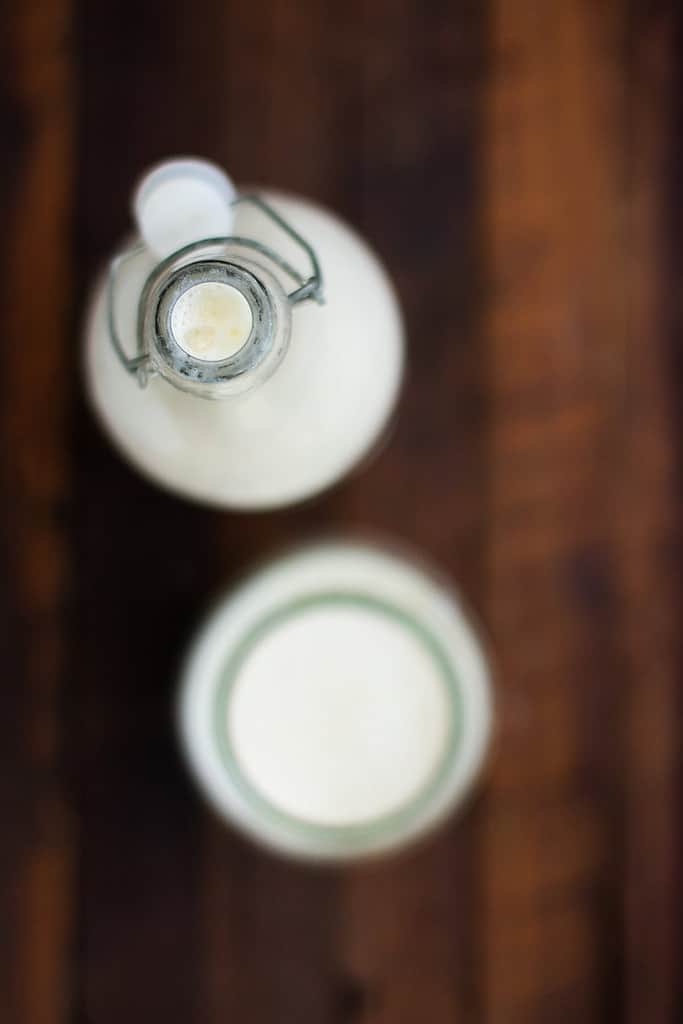
creamy soy milk recipe
- serves
- makes 7 cups
- preparation time
- 30 min + overnight soaking & cooling time
- cooking time
- 20 min
ingredients
- 1 cup dried soy beans + water for soaking
- 8 cups water
- 1/2 teaspoon salt + extra large pinch
- 3 medjool dates
method
Place dried soy beans in a medium sized bowl and cover with plenty of water, enough to yield double the height of the soy beans. Add the 1/2 teaspoon of salt and stir through. Leave soy beans to soak overnight, or for at least 12 hours.
Drain the soy beans through a fine sieve and run them under cold water, rinsing well.
Place the rinsed and washed soy beans into a blender with the 5 cups of water. Blend on high for approximately 40 – 60 seconds until the mixture is lovely and homogenised and frothy.
Pour the blended soy milk mixture into a large saucepan and bring to a low heat. Allow the soy milk to slowly heat up, stirring often to stop it sticking to the bottom of the pan. The milk with be frothy on top, however as it gets close to being ready to take off the heat the froth will grow tall like an over gassed beer. This should take around 20 minutes to get to this stage. Once the soy milk froths up like this and is nice and hot remove it from the heat. Cover with the saucepan lid and set aside to cool to a tepid temperature.
Once the soy milk has cooled, place it back in the blender with the medjool dates and the pinch of salt. Add in the remaining 3 cups of water (depending on your blender size you might need to do this in batches). Blend till the dates are fully incorporated and the soy milk is lovely and creamy.
Take a large bowl and then using a nut milk bag (or muslin cloth) carefully pour the soy milk into the bag. You will most likely need to do this in two stages due to the shear quantity of the milk. Use your hands to ‘milk’ the nut milk bag, pulling down and squeezing to let the liquid come through. The liquid will not pass as easy as almond milk, so keep in mind it will take a little longer and need a little more patience (my best virtue – haha).
Once all the soy milk has been squeezed out you will be left with a soft doughy lump of the soy bean pulp (called okara for those interested). I suggest freezing this and using it in baking. Watch this space for ideas!
Pour the now filtered soy milk carefully into glass jars, using a funnel if necessary. Ensure the lids are on tight and store in the fridge.
Stores in the fridge for up to 4 days. You can freeze your soy milk after this or even freeze it straight away in portion sizes, which is what I recommend doing.
Jessica Cox is a qualified practicing Nutritionist with a Bachelor Health Science (Nutrition) and over 15 years of clinical experience. She is the founder and director JCN Clinic, published author and established recipe developer. Jessica is well respected within health and wellness space for her no fad approach and use of evidence-based nutrition.





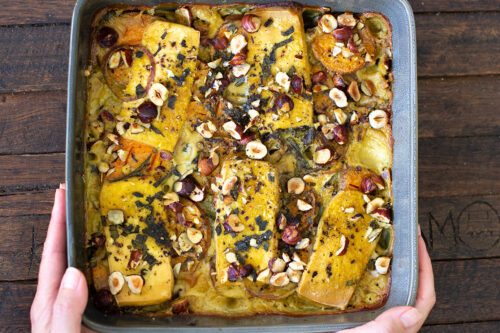
Thanks Jess – I regularly make almond milk also, but have recently tried a couple of times to make Oat Milk. I do use it in hot drinks, BUT you have to soak it & rinse it sooooo much or it has a tendency to get a ‘slimy’ kind of texture, I guess from the starch in the oats.
Oh really, I’ve not made oat milk.That is interesting about it getting slimy. Definitely would be the starch from the oats. Its amazing the difference from grains to legumes to nuts with making dairy free milks!
Yep for sure – even after I’ve rinsed & rinsed & rinsed. Bit annoying. Even the dogs don’t love it! ?
Also read this article recently which is interesting & tragic re almonds – though I have no idea where NZ & Oz almonds come from & if bees are affected.
https://www.theguardian.com/environment/2020/jan/28/what-plant-milk-should-i-drink-almond-killing-bees-aoe?fbclid=IwAR0yj-H_Smc-J4fMMwC0juS8_Rxzdta1GaAFV8nsEO44QvwGGXaDaKgeuXI
Yes! My Mum and I were talking about this at Christmas and how it was such a quandary regarding trying to do the best thing!
Hey Jess Could you make like a silken tofu out of the soy pulp if left a little of the liquid with it ?
My understanding is that you make the tofu actually out of the liquid portion from what I have read (I’m keen to do it myself!). You add an agent to the liquid and then leave it to do its thing for a certain amount of days. I think the pulp could be used in baking and other fun things – I’ve frozen mine to experiment with. 🙂